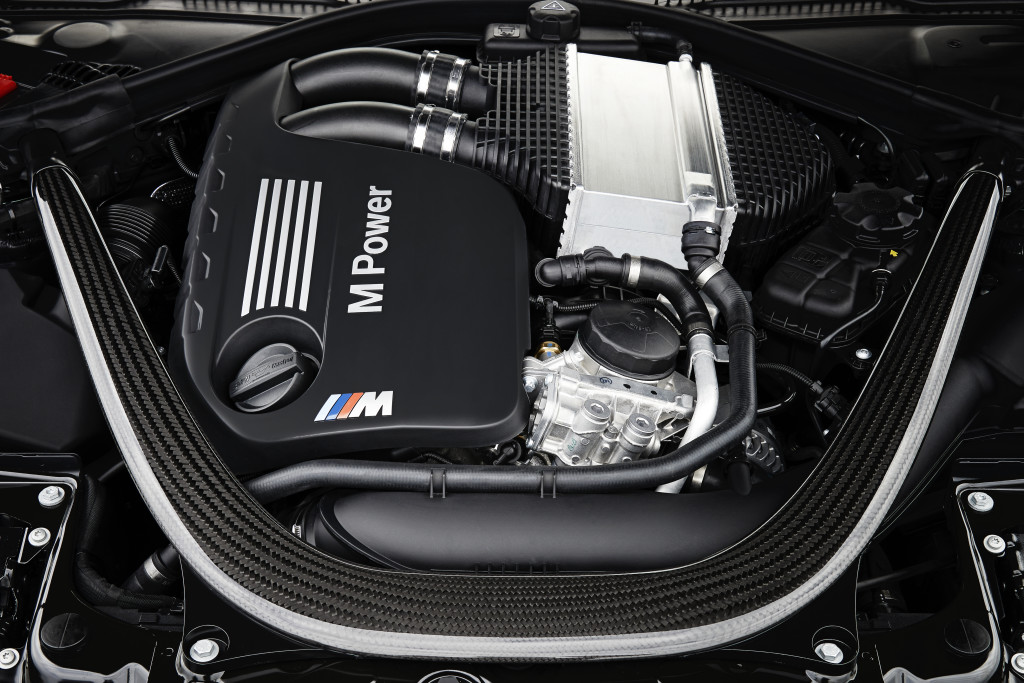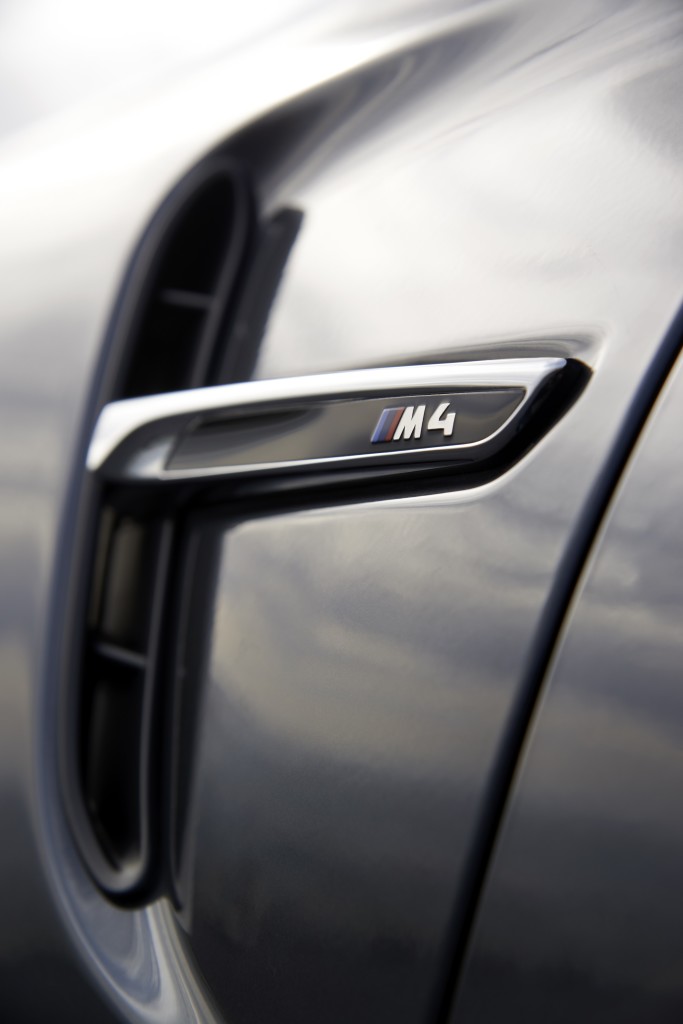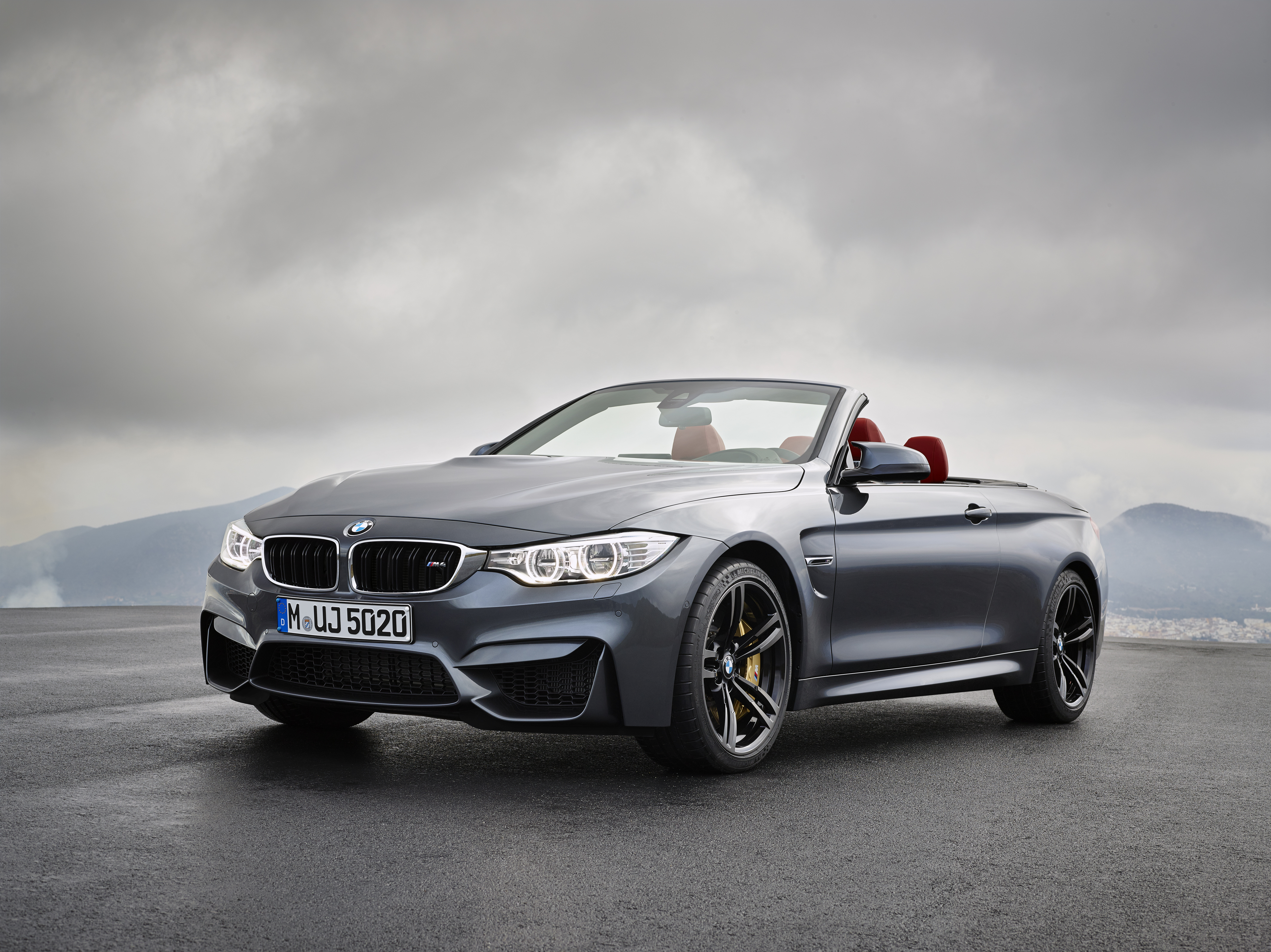UNITED STATES—For those seeking a means by which to enjoy summer to the fullest, the new 2015 BMW M4 Convertible should be high on the list of transportation choices. While the weather certainly has been anything but predictable recently, the M4’s retractable hardtop is a safe bet for those who plan for the worst and hope for the best. Whether it is rain or shine; the new M-Division product should be more than capable of delivering in the fun-to-drive department.
On paper, the M4 indeed looks promising. Let’s start with the most important question: “What’s under the hood?” Wisely abandoning its brief flirtation with naturally aspirated V-8 M3 & M4 sports sedans, BMW has instead opted for a return to the smaller, yet coveted in-line six. Was it a decision motivated purely by economic principles or one designed to invoke a sense of heritage?
“When developing a new model we first think about what requirements the vehicle will be expected to meet, and then decide which concepts and technologies will best meet these goals,” says Albert Biermann (former BMW M VP of Engineering).

Although this response is vague at best, it does suggest that BMW executives decided the high-tech twin-turbo I-6 offered the best balance between performance and economy. Generating 425 hp (roughly 5-10 more than the previous generation’s V-8), the sophisticated power plant can propel the M4 from 0-60 mph in a BMW-claimed 3.9 seconds (when fitted with the 7-speed M Double Clutch Transmission). Fuel consumption is also improved by 25 percent over the outgoing V-8.
Previously, the M3 managed to gain wait and size with every successive generation. The current chassis, designated F82 (F83 for convertibles) marks a deviation from that trend. The extensive use of Carbon-Fiber-Reinforced-Plastic (CFRP) and aluminum are a testament to the fact that BMW has reset its priorities. Dynamic ability and efficiency have overtaken brute force as the primary goals.
In its efforts to maximize the performance envelope of their M4, M-Division was not one to neglect the wind tunnel. Just as they insist on evenly distributing weight, “M” engineers demand that the affects of wind resistance be apportioned equally across the body.

“The way in which we channel the inflowing air through the engine oil cooler creates a Venturi effect, which reduces front axle lift and, in so doing, improves the steering,” explains Biermann.
To some, Biemann’s words may sound a bit neurotic. M-Engineers would likely consider them synonymous to common sense. Whether this obsessive compulsive approach pays drivers in noticeable performance dividends or not, remains to be seen. Stay tuned for the upcoming road test review. Of particular focus will be BMW’s recent, controversial, movement to electric power steering. Enthusiasts equate such a move as being akin to handing the steering wheel over to a robot. These driving purists would say the steering rack is the means by which a driver communicates with the road. An electric steering rack makes this communication feel artificial, much like digital phone services initially made voices sound artificial. To find out if these purists have a point, check back in a week or two for first impressions from behind the wheel. Until then, please post questions & comments below or email Kyle at kyle@thesfnews.com.






